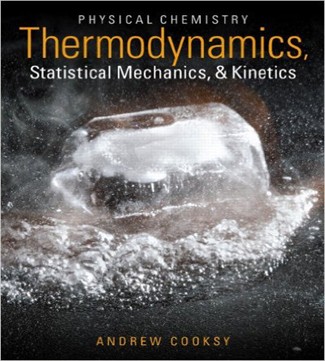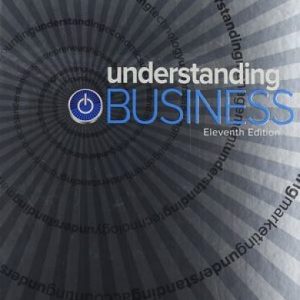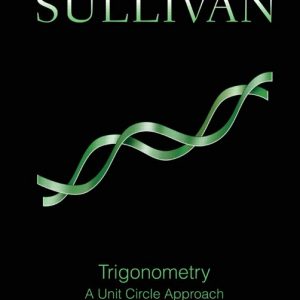Instant download Physical Chemistry Thermodynamics Statistical Mechanics and Kinetics Cooksy Solution Manual pdf docx epub after payment.

Product details:
- ISBN-10 : 0321814150
- ISBN-13 : 978-0321814159
- Author: Andrew Cooksy
Andrew Cooksy’s clear teaching voice help students connect immediately with the subject matter while defusing some of their initial trepidation about physical chemistry. Through lively narrative and meticulous explanations of mathematical derivations, Physical Chemistry: Thermodynamics, Statistical Mechanics, and Kineticsengages students while fostering a sincere appreciation for the interrelationship between the theoretical and mathematical reasoning that underlies the study of physical chemistry. The author’s engaging presentation style and careful explanations make even the most sophisticated concepts and mathematical details clear and comprehensible.
Table Of Contents:
Physical Chemistry at the Macroscopic Scale:
Statistical Mechanics, Thermodynamics, and Kinetics
A Introduction: Tools from Math and Physics
A.1 Mathematics
A.2 Classical Physics
I Extrapolation to Macroscopic Systems
1 Introduction to Statistical Mechanics: Building Up to the Bulk
1.1 Properties of the Microscopic World
1.2 Bulk properties
1.3 Entropy
1.4 The ideal gas and translational states
1.5 The ideal gas law
Problems
2 Partitioning the Energy
2.1 Separation of Degrees of Freedom
2.2 The equipartition principle
2.3 Vibrational and rotational partition functions
2.4 The Translational Density of States
2.5 The translational partition function
2.6 Temperature and the Maxwell-Boltzmann distribution
Problems
3 Statistical Mechanics and Molecular Interactions
3.1 Extrapolation to many molecules
3.2 Pressure of a non-ideal fluid
3.3 Averaging the dipole-dipole potential
3.4 Bose-Einstein and Fermi-Dirac statistics
4 Mass Transport
4.1 Statistics of molecular collisions
4.2 Transport without external forces
4.3 Transport with external forces
Problems
5 Energy transport
5.1 Conduction, convection, and radiation
5.2 Blackbody radiation
5.3 Spectroscopic intensities
5.4 Laser dynamics
5.5 Spectroscopic linewidths
5.6 Conclusion to Part IV: E, U, Ndof , S
Problems
II Non-Reactive Macroscopic Systems
6 Introduction to Thermodynamics
6.1 The first law of thermodynamics
6.2 Approximations and assumptions
6.3 Mathematical tools
6.4 Computer simulations
Problems
7 Energy and Enthalpy
7.1 Heat capacities
7.2 Expansion of gases
Problems
8 Entropy
8.1 Entropy of an ideal gas
8.2 The second law of thermodynamics
8.3 The third law of thermodynamics
8.4 Ideal mixing
Problems
9 Phase Transitions and Phase Equilibrium
9.1 Phase transitions
9.2 Thermodynamics of phase transitions
9.3 Chemical potentials
9.4 Statistical mechanics of vaporization
9.5 Phase diagrams
Problems
10 Solutions
10.1 The standard states
10.2 Statistical mechanics of solutions
10.3 Thermodynamics of solutions
10.4 Ionic solutions
10.5 Applications of the activity
10.6 Conclusion to Part V: E, U, Ndof , S
Problems
III Reactive Systems
11 Chemical Thermodynamics
11.1 Introduction to chemical reactions
11.2 Enthalpies of reaction
11.3 Spontaneous chemical reactions
11.4 Chemical equilibrium
Problems
12 Elementary Reactions
12.1 Reaction rates
12.2 Simple collision theory
12.3 Transition state theory
12.4 Diffusion-limited rate constants
12.5 Rate laws for elementary reactions
Problems
13 Multi-step Reactions
13.1 Elements of multi-step reactions
13.2 Approximations in kinetics
13.3 Chain reactions
Problems
14 Reaction Networks
14.1 Atmospheric chemistry
14.2 Combustion chemistry
14.3 Molecular astrophysics
14.4 Enzyme catalysis
14.5 Conclusion to the text
People also search:
|
what is statistical thermodynamics in chemistry |





